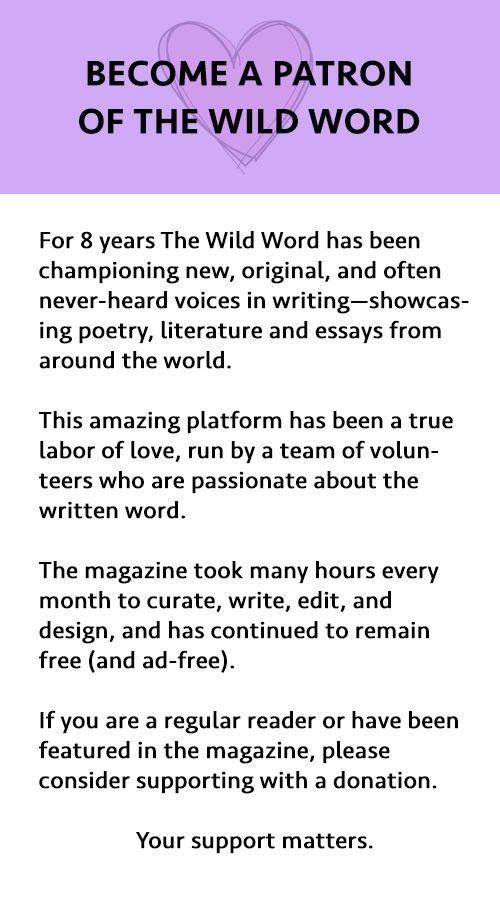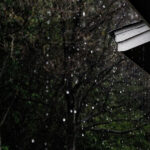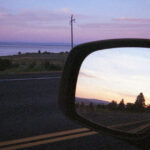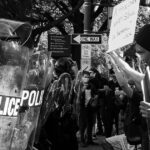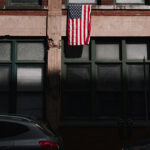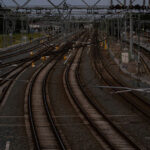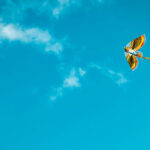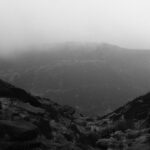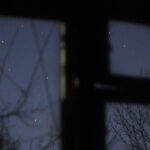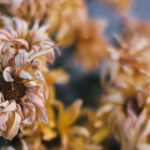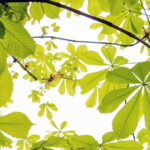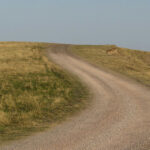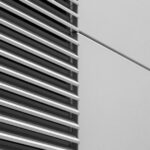ARTIST-IN-RESIDENCE
★ ★ ★ ★
DONNA STEINER
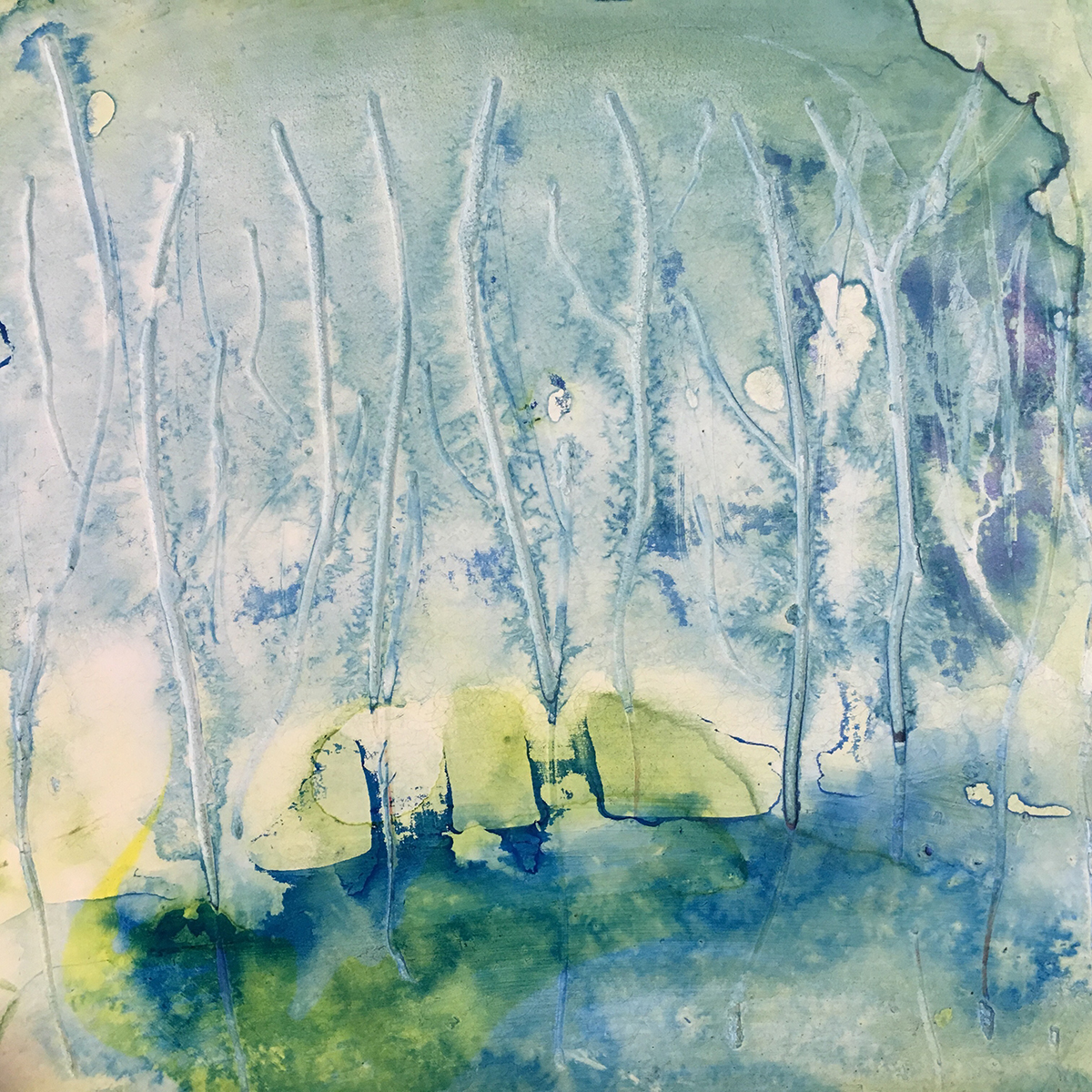
Second Art
I have been a writer for almost four decades, but about a year ago my parents died and I began painting. The speed with which we lost them – just 43 days separated the two deaths – left me reeling. Although I kept writing, my efforts were stenographic; getting words down was the extent of the ambition, and I found little joy in rhythm or metaphor or theme. I made marks on paper, I tapped marks from keyboard to screen, but they were perfunctory and graceless.
Not writing, or writing very little, was not acceptable; there was energy in my body that required expression. A wise and generous friend invited me to her studio and set me up with a big table and art supplies. “Make something,” she said. I started wrapping thread around branches, building small, broken, half-mended creatures.
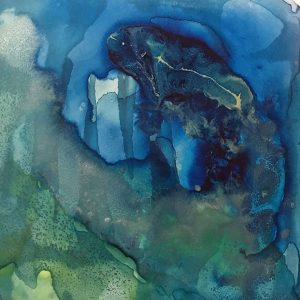
Weeks later, when I ran out of branches, on a day when I felt brave, I started brushing water and ink on clayboard. To me these were maps of the ocean, where my parents live now, and I painted blues and greens exclusively for many months. Most of the paintings were abstractions, but occasionally I scratched the outline of a squid or a fish into the surface of the board. I was creating a world for my parents, a home, and finding ways to communicate the magnitude of the loss.
When I was in the studio, time collapsed, sound collapsed, anxiety disappeared, grief abated. All that mattered was the physicality of standing at the elevated table, watching one color bleed into another. The ink was appropriate – my mother was a frustrated writer, my father an amateur painter. Both of them were master letter writers. Dissolving ink into water also felt significant. Not only had my parents’ bodies been cremated and their ashes released into the Atlantic Ocean, but the beach was our childhood home away from home; we grew up on the Jersey shore and there is still no place I would rather be.
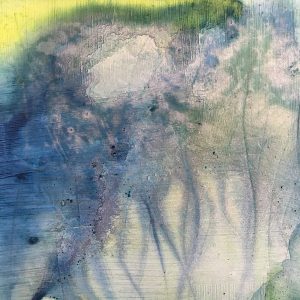
My work in the studio engaged me when nothing else did. Painting became my second art.
There is tremendous freedom and comfort in not being expected to do something “right.” In learning a new art, I feel none of the pressure of convention, can relax into the process and move with abandon. That is not to say my studio time is frivolous, for although there are elements of play, my work there is intentional and intellectually engaging.
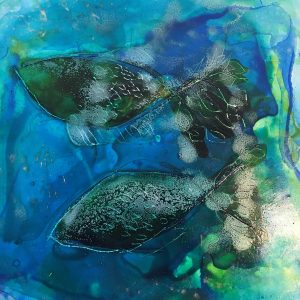
There is satisfaction in abstraction, in allowing the materials to tell stories that I cannot tell with words. There is pleasure in creating beauty, in observing the chemistry of paint and water and heat and gravity. There is control and absence of control, and confronting that dichotomy is cathartic. When I scratch the surface, actually use tools to cut the surface of the clayboard, it is also metaphoric – I am scratching the surface of emotion, of the body, trying to release something that has no other release.
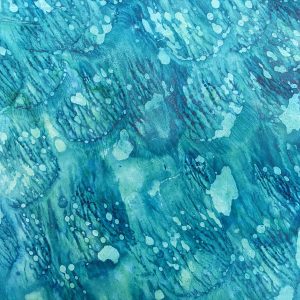
And there is the discipline of patience – I literally watch paint dry. I watch particulates attract or repel the substrate, I watch ink gravitate to a corner that is microscopically lower in elevation than the rest of the board.
In my second art, everything has an irrevocable impact. If I choose to alter a painted surface, I have to say goodbye to what is in front of me. There is no way to get it back.
That is a lesson that I need to learn every day. There is no way to get it back.
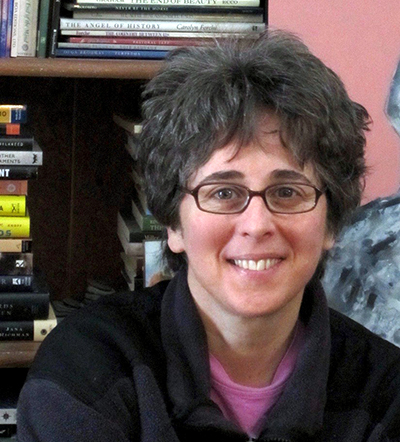
Donna Steiner’s essays and poetry have been published in literary journals including Fourth Genre, The Bellingham Review, The Sun, Full Grown People and The Manifest Station. She teaches literary citizenship and creative writing at the State University of New York in Oswego. A chapbook of five essays, Elements, was released by Sweet Publications. Her paintings will soon appear in Lunch Ticket.

